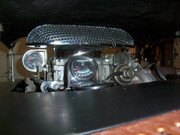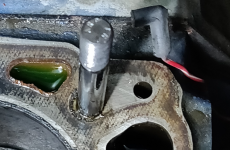Linear Six
Well-known member
Hi everyone. I have an issue that has me banging my head and hope someone can help me out.
So I have a 200 with a sniper 2300, paxton super charger (6lbs of boost) and a VI aluminum head.
The last power adder I installed was the blower. Since then I've been having issues with blow by while under boost. Plumes of grey blue smoke out of the exhaust.
All the cylinders have good pressures and all within a couple of PSI difference. I've also performed a leak down test and found all the cylinders are within 7 to 10 %.
I did not install new rings when I installed the blower. So the rings are gapped for NA operation. my last attempt was to install a Wagner PCV valve and catch can inline between the carb vacuum line and valve cover rear port. i've switched back to the factory baffled valve cove and still no difference. Any ideas would be much appreciated.
thanks
So I have a 200 with a sniper 2300, paxton super charger (6lbs of boost) and a VI aluminum head.
The last power adder I installed was the blower. Since then I've been having issues with blow by while under boost. Plumes of grey blue smoke out of the exhaust.
All the cylinders have good pressures and all within a couple of PSI difference. I've also performed a leak down test and found all the cylinders are within 7 to 10 %.
I did not install new rings when I installed the blower. So the rings are gapped for NA operation. my last attempt was to install a Wagner PCV valve and catch can inline between the carb vacuum line and valve cover rear port. i've switched back to the factory baffled valve cove and still no difference. Any ideas would be much appreciated.
thanks











